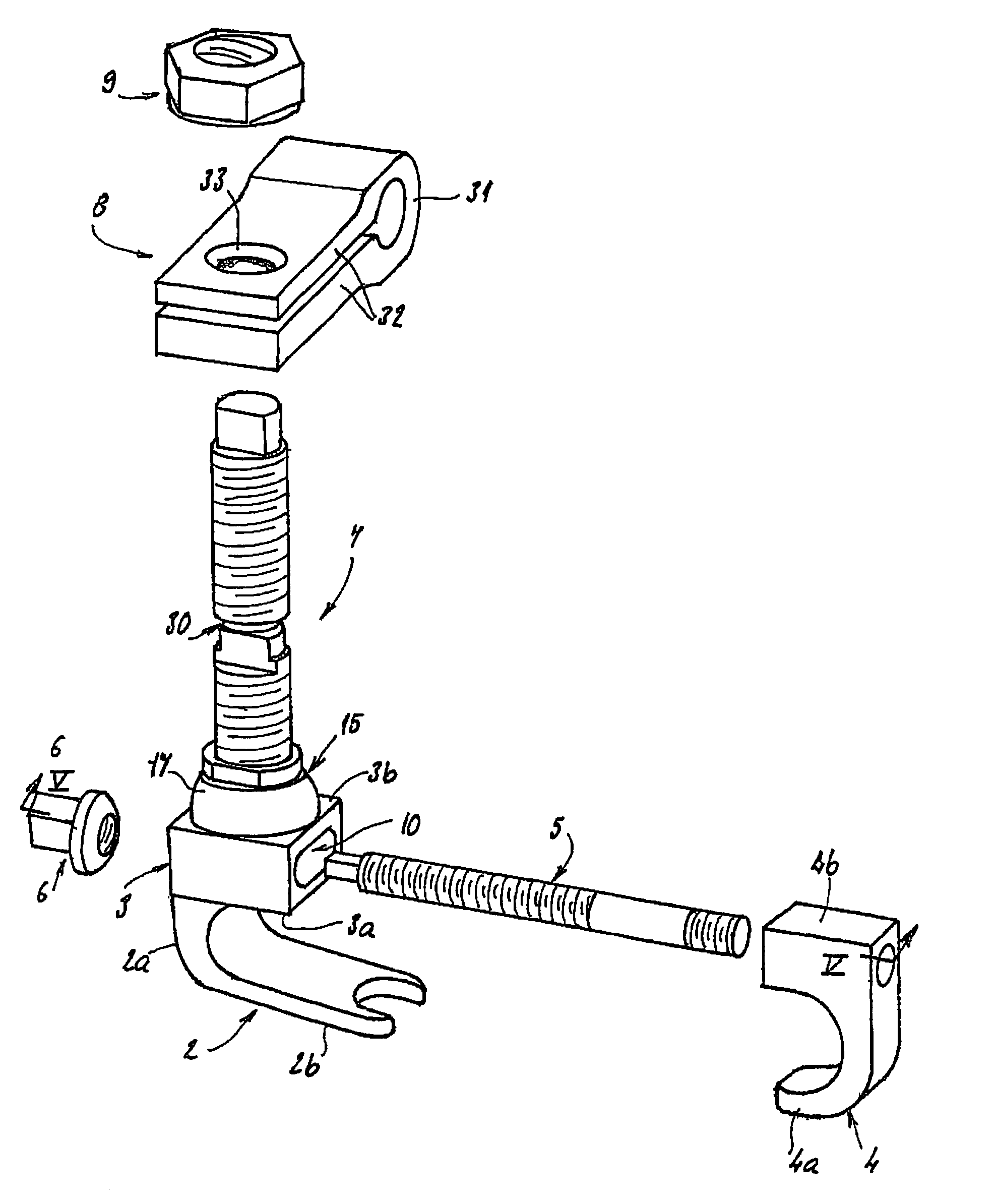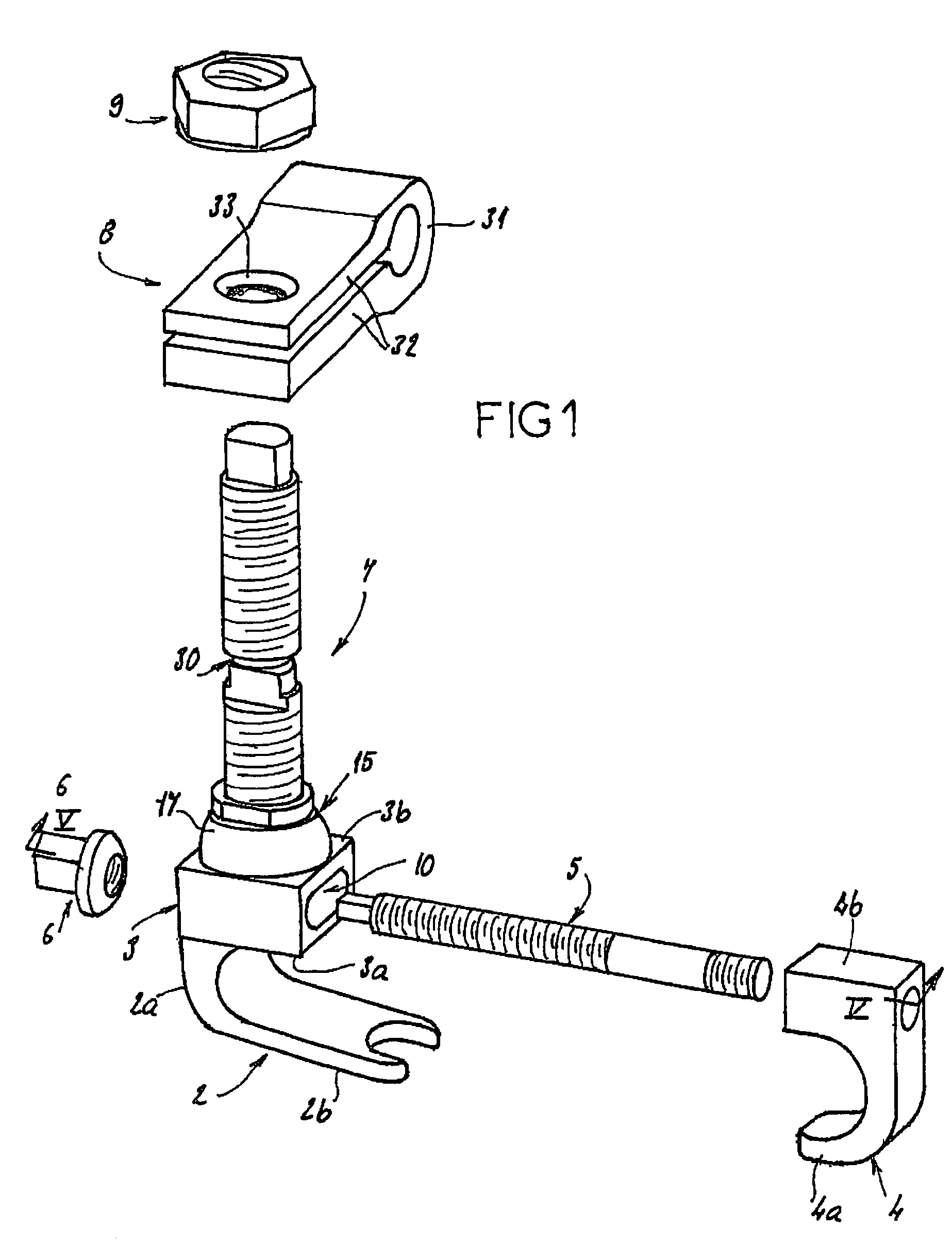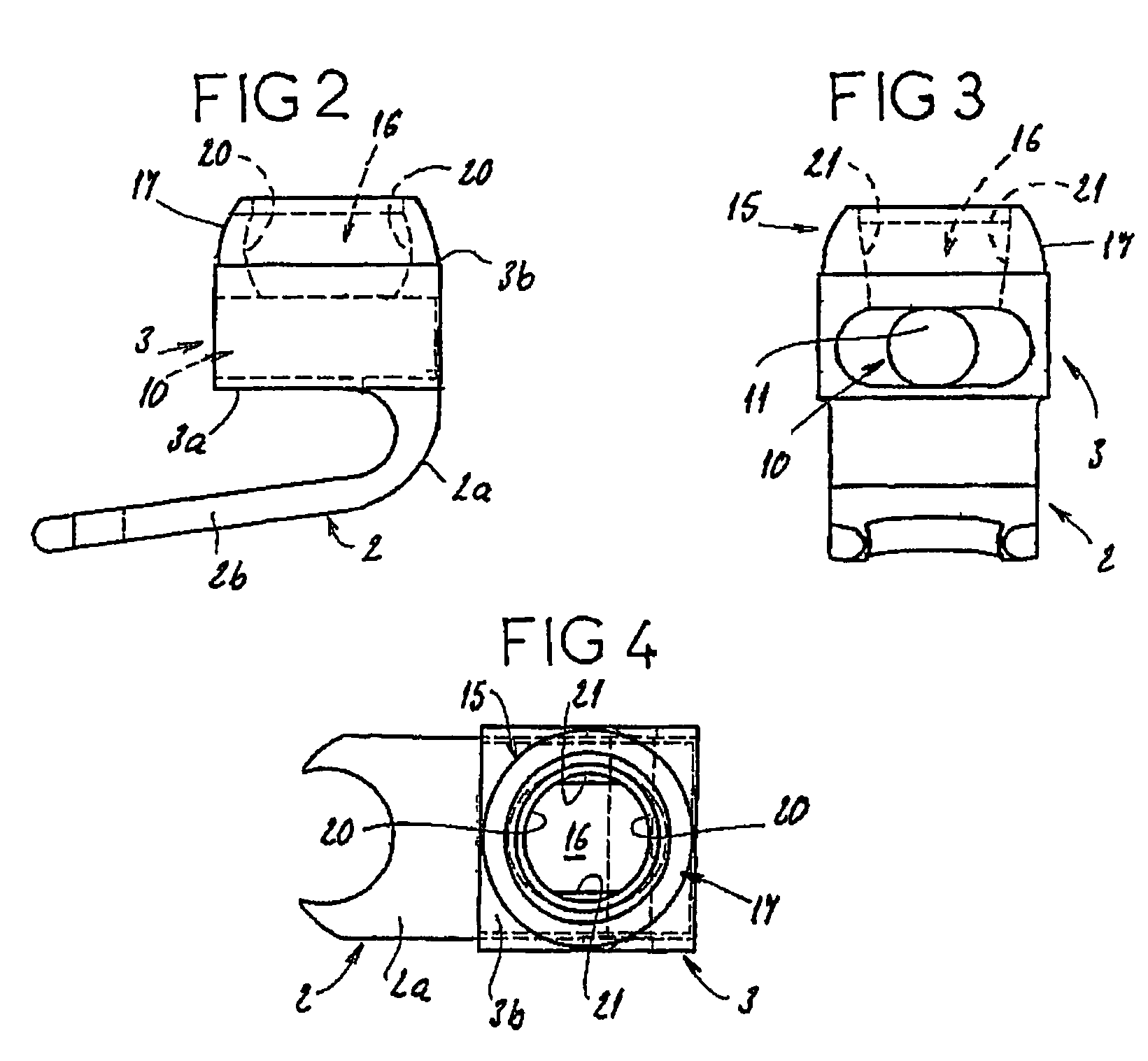Vertebral arthrodesis equipment
a technology of arthrodesis equipment and articular cartilage, which is applied in the field of articular cartilage equipment, can solve the problems of limited implementation of this hook, inability to adapt, and provoking doubts about the perfect resistance of the assembly that it allows, and achieves the effect of facilitating the implantation of equipmen
- Summary
- Abstract
- Description
- Claims
- Application Information
AI Technical Summary
Benefits of technology
Problems solved by technology
Method used
Image
Examples
Embodiment Construction
[0029]FIG. 1 represents an anchorage assembly 1 forming part of a vertebral arthrodesis equipment.
[0030]This equipment includes two shoring rods, designed to be to be disposed parallel to one another and on either side of the vertebrae, and anchoring members for anchoring these rods to the vertebrae. These anchoring members may be pedicle screws and / or one or more anchoring assemblies 1. The equipment may further include cross-members that are designed to draw the shoring rods transversely together progressively, for preserving their position relative to one another.
[0031]These rods, pedicle screws and cross-members are known in and of themselves and are therefore not specifically described.
[0032]As is shown in FIG. 1, anchoring assembly 1 comprises a hook 2 integral with a parallelepiped base 3, a hook-shaped component 4 attached to a threaded rod 5, a screw 6 that may be screwed onto this threaded rod 5, a threaded rod 7, a stirrup piece 8, and a nut 9.
[0033]Hook 2 is furnished wi...
PUM
 Login to View More
Login to View More Abstract
Description
Claims
Application Information
 Login to View More
Login to View More - R&D
- Intellectual Property
- Life Sciences
- Materials
- Tech Scout
- Unparalleled Data Quality
- Higher Quality Content
- 60% Fewer Hallucinations
Browse by: Latest US Patents, China's latest patents, Technical Efficacy Thesaurus, Application Domain, Technology Topic, Popular Technical Reports.
© 2025 PatSnap. All rights reserved.Legal|Privacy policy|Modern Slavery Act Transparency Statement|Sitemap|About US| Contact US: help@patsnap.com



